
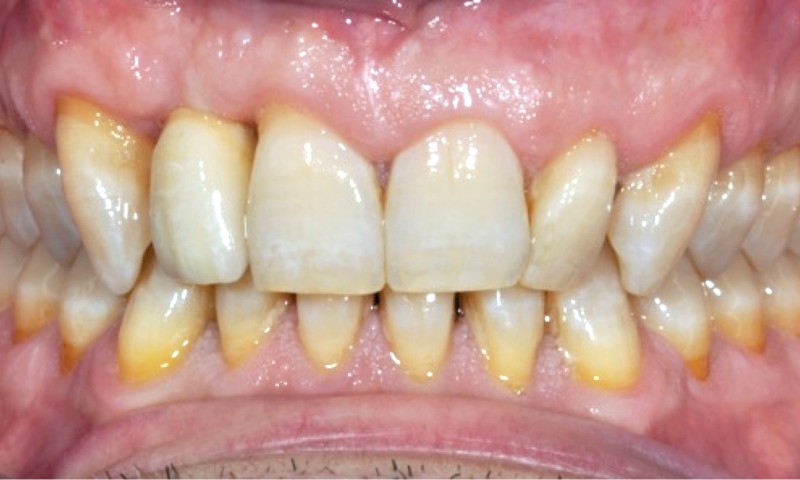
Correct handling of the immediate provisionalization can be essential in cases with very high esthetic expectations.
Introduction
The main challenges when carrying out restorations in the anterior sector include maintaining the natural appearance of the peri-implant area and optimizing the soft-tissue emergence.
Correct handling of the immediate provisionalization can be essential in cases with very high esthetic expectations.
Baseline situation
A 47-year-old patient with no previous medical history of interest who smoked a packet of cigarettes a day visited the clinic due to periapical suppuration at tooth 12 for which he had received endodontic treatment over 20 years earlier (Figure 1).
During the check-up, suppuration was found in this area, as well as tumefaction in the vestibular zone.
A periapical X-ray was taken and a large radiolucent periapical lesion compatible with an odontogenic cyst was observed. A CBCT was requested to complete the presumed diagnosis (Figure 2).
Cold testing was conducted to assess pulp vitality for teeth 12, 13, 14, 15, 16, 21, 22, 23, 24, 25 and 26.
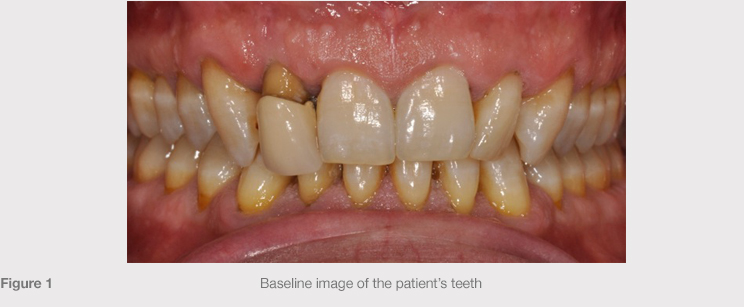
![]()
Procedure
The initial surgical resection of the cyst and the extraction of tooth 12 were performed and the sample was sent to pathological anatomy to confirm the diagnosis.
Once the odontogenic cyst had been removed, the clinical situation was very unfavorable due to the major bone defect that now existed, presenting us with an esthetically very complex case (Figure 3).
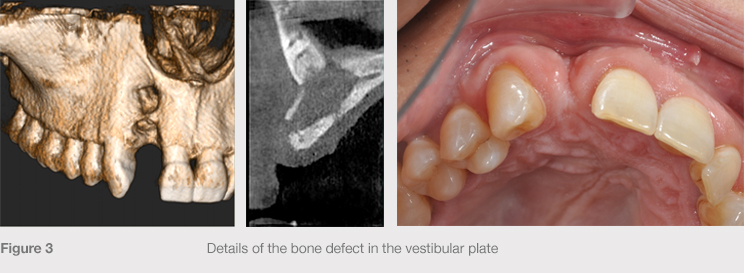
Twelve months after the cyst exeresis, and once the patient had given up smoking, a second surgical operation to reconstruct the hard tissue and simultaneously place an implant was performed (Figure 4).
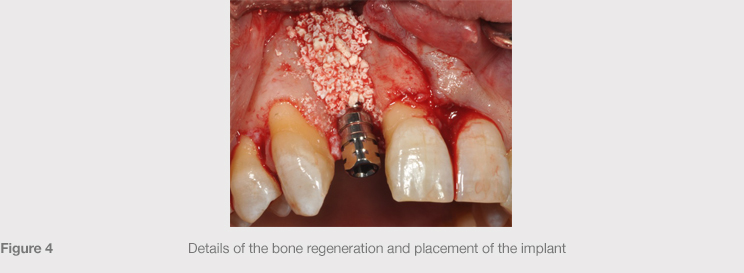
The regeneration was done using bone biomaterial of bovine origin (particle size 1-2 mm), and an AVINENT Biomimetic Ocean IC implant (4.0 x 13 mm) was placed during the same operation. Good primary stability with a torque value of 45 Ncm was achieved. Even so, submerged healing was decided on (Figure 5).
![]()
Integration occurred normally. Six months after the placement of the implant and the bone regeneration, a second intervention was carried out to expose the implant. An AVINENT healing abutment was placed in order to begin the mucosa modeling (Figure 6).

Following a soft-tissue healing phase lasting four months, the healing abutment was removed and an impression for making the temporary crown was taken (Figure 7).
The digital scan using the TRIOS (3Shape) enabled the situation of the intraoral tissues to be precisely transferred, and a provisionalization was made with a prosthesis milled at AVINENT with the solution for Vita CAD-Temp® IS implants on an AVINENT titanium base (Figure 8).


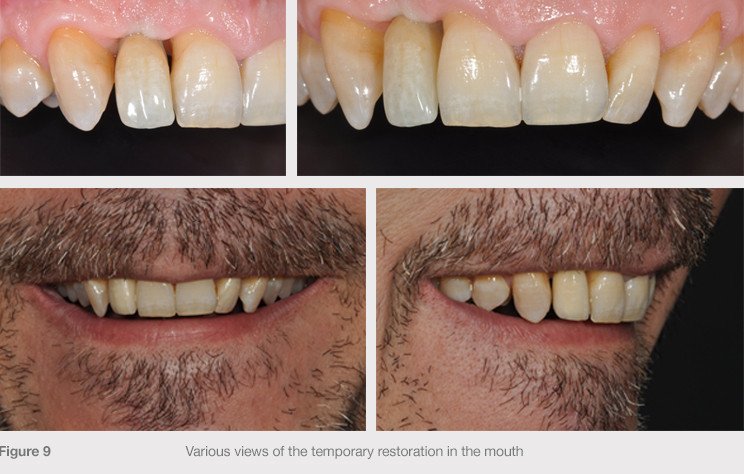
Following eight weeks of tissue modeling with the temporary crown, a form and outline were achieved that were favorable for proceeding with the final digital impression (Figure 9).
The temporary crown was replaced with a permanent direct-to-implant restoration with the Vita Enamic® IS solution on an AVINENT titanium base (Figure 10).
This solution consists of a hybrid ceramic that is ideal for using in digital workflow cases due to the ease with which it can be milled and the high precision of its forms. It is an elastic material that behaves well and has high resilience which is comparable with natural teeth, giving it advantages over other types of traditional composites.
To establish a good connection and improve the precision and fit, an AVINENT IC titanium interface was placed between the implant and the ceramic part of the abutment, preserving the soft tissues and giving an emergence profile with excellent esthetic results.

Result of the treatment
Complex clinical cases, such as the major undertaking of surgically removing an odontogenic cyst, require materials that are easy to work and highly polished and which offer high-precision forms during the provisionalization phase to control the peri-implant gingival levels.
The technical and esthetic advantages of these new materials mean they can be used as a solution for implant-supported restorations in cases with high treatment expectations.